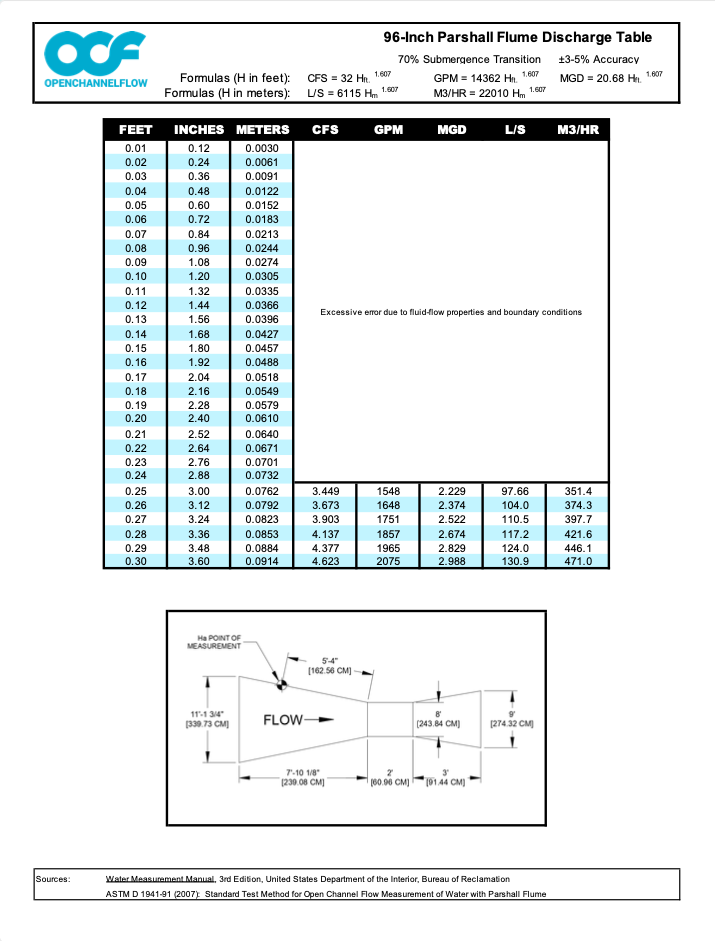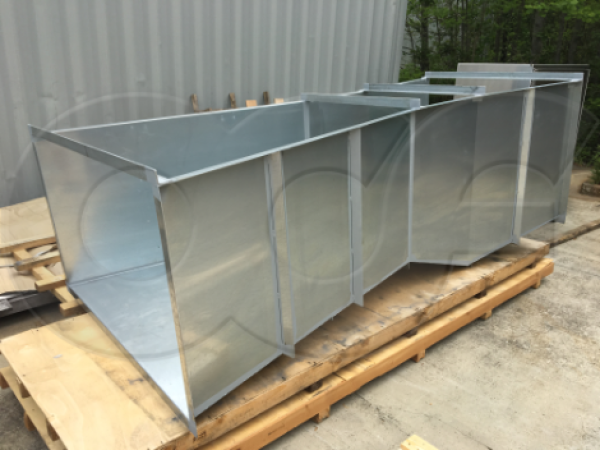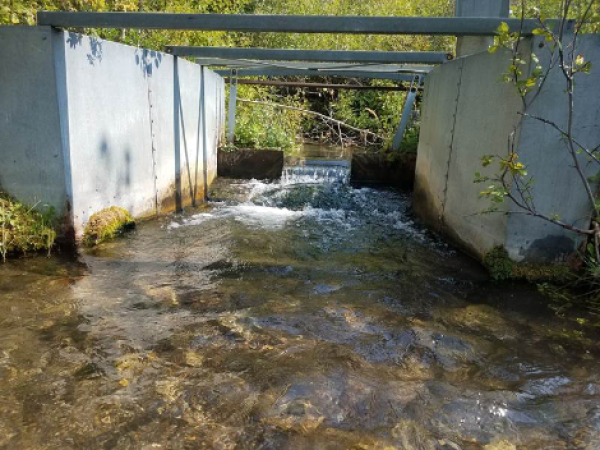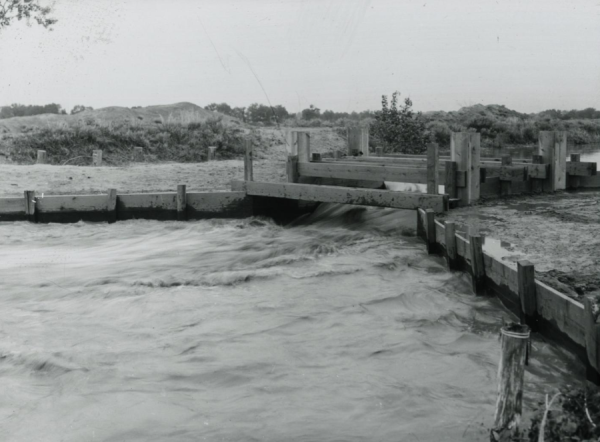This website uses a variety of cookies, which you consent to if you continue to use this site. You can read our Privacy Policy for
details about how these cookies are used, and to grant or withdraw your consent for certain types of cookies.
The 96-Inch Parshall Flume
The primary uses of the 96-inch Parshall Flume are to either measure surface waters (watersheds / catchments / water rights) or sewage flows at wastewater treatment plants.
Like the other large Parshalls, the 96-inch Parshall Flume ships in two pieces for field assembly.

Applications
- Surface waters
- Rivers and streams
- Catchments
- Watersheds
- Water rights
- Canals
- Wastewater treatment plants
Configurations
The 96-inch Parshall Flume is available in two different configurations:
- Plain
- Where field transitions are formed
- Wing Walls
- Where wing walls are provided to span a rectangular channel
Where wing walls are provided, they ship detached for field installation to minimize the chance of damage during shipment.
Flume Accuracy
A Parshall Flume should be accurate to within +/-5% (ASTM D1941) in the field with proper upstream flows, good installation, and a flume that is in dimension.
While corrections are available for settlement or submergence, care should be taken during the installation to ensure that neither occur.
Flume Dimensions
While similar in layout, large Parshall Flumes are not scale models of each other. The throat and exit geometry are identical, however, varying only in width for 12-inch to 96-inch sizes.
Free-Flow Equation
The Parshall Flume standard free flow equation:
Equation — Parshall Flume Free-flow
Q = free flow rate (cfs / m3/s)
K = flume discharge constant (varies by flume size / system of units)
Ha = depth at the point of measurement (feet / meters)
n = discharge component (dimensionless, depends upon flume size)
K = flume discharge constant (varies by flume size / system of units)
Ha = depth at the point of measurement (feet / meters)
n = discharge component (dimensionless, depends upon flume size)
For the 96-inch Parshall:
| Minimum Head (ft) | 0.25 | Minimum Head (m) | 0.0610 |
| Minimum Flow Rate (cfs) | 3.449 | Minimum Flow Rate (l/s) | 97.66 |
| Maximum Head (ft) | 2.50 | Maximum Head (m) | 0.7620 |
| Maximum Flow Rate (cfs) | 139.5 | Maximum Flow Rate (l/s) | 3,951 |
| Equation (cfs, ft) | 32*H1.607 | Equation (l/s, m) | 6,115*H1.607 |
Discharge Table
The free flow discharge table for the 96-inch Parshall is available for download.
The table provides:
- Top-down view of the flume with the Ha (primary point of measurement) shown
- Discharge equations in SI and Imperial units
- Flume's accuracy
- Submergence Transition (St)
- Source for the table's information

Materials
Openchannelflow offers the 96-inch Parshall Flume in two different materials to suit varying customer needs:
- Fiberglass (FRP)
- Lightweight & customizable
- Galvanized steel
- Economical
Submergence Transition
Submergence when the downstream conditions are such that they restrict the flow out of a flume. As submergence increases a point is reached where the indicated flow rate overstates flow enough (the actual flow rate being restricted - and lower) that a correction has to be made.
The point at which this occurs is termed the submergence transition (St).
Equation — Flume Submergence Transition
S = submergence ratio
St = submergence transition
Ha = depth at the point of measurement (feet / meters)
Hb = depth at the point of measurement (feet / meters)
St = submergence transition
Ha = depth at the point of measurement (feet / meters)
Hb = depth at the point of measurement (feet / meters)
For larger Parshall Flumes like the 96-inch, the submergence transition (St) is 70%. At or above this ratio and the submerged flow equation needs to be applied to determine the actual flow rate.
Related Blog Posts
Explore more insights in our blog.

LOCATIONS IN ATLANTA, GA & BOISE, ID





